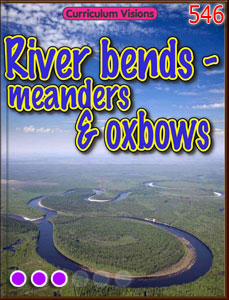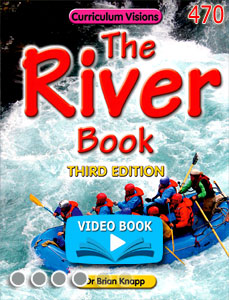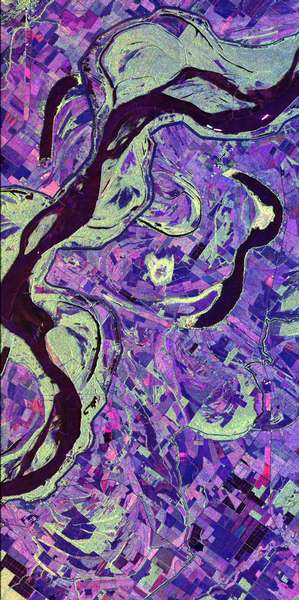Explore these further resources...
(These links take you to other parts of our web site, never to outside locations.)
You can search in these books:




A meander is a big bend in a river. A meander that nearly loops back on itself is called an oxbow or gooseneck.
Meanders are made by rivers flowing over a floodplain. A single bend on its own is not a meander. Meanders occur in patterns and are normally found in the lower reaches of a river.
Meanders are formed this way: As river water runs around a bend, so it flows faster on the outside of the bend, wearing the bend away. The water flows much more slowly on the inside of a bend, and so silt, sand and clay carried by a river tend to settle out on the inside bend.
You can see the difference in many rivers if you want next to the banks: the one that is on the outside has steep cliff-like edges, while the inside bank is normally gentle.
Because water is wearing away one part of a bend and material is settling out on the other, meanders do not stay in the same place, but move about over the floodplain.
In places where there are many meanders, such as the lower Mississippi river, you can see the paths of the ancient meanders if you look down from the air.

